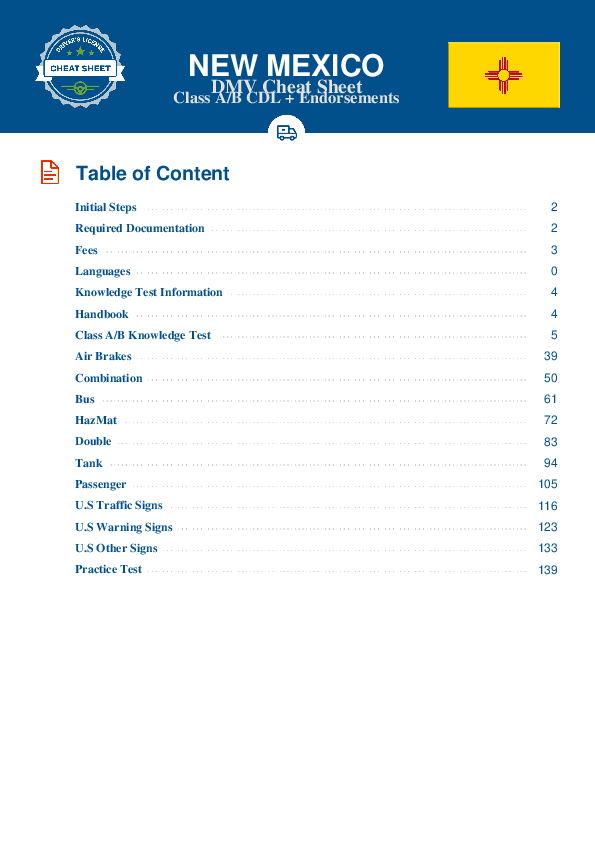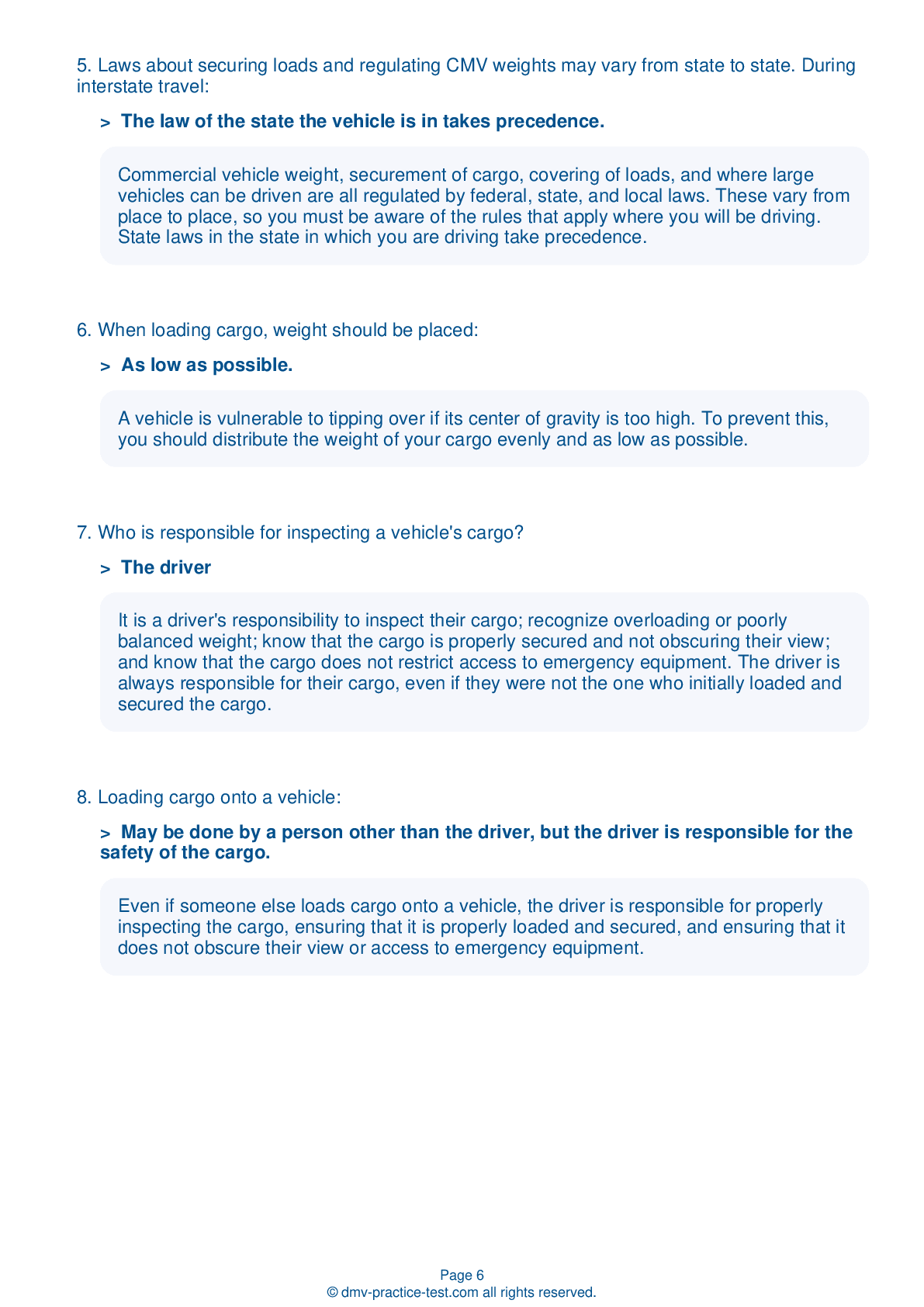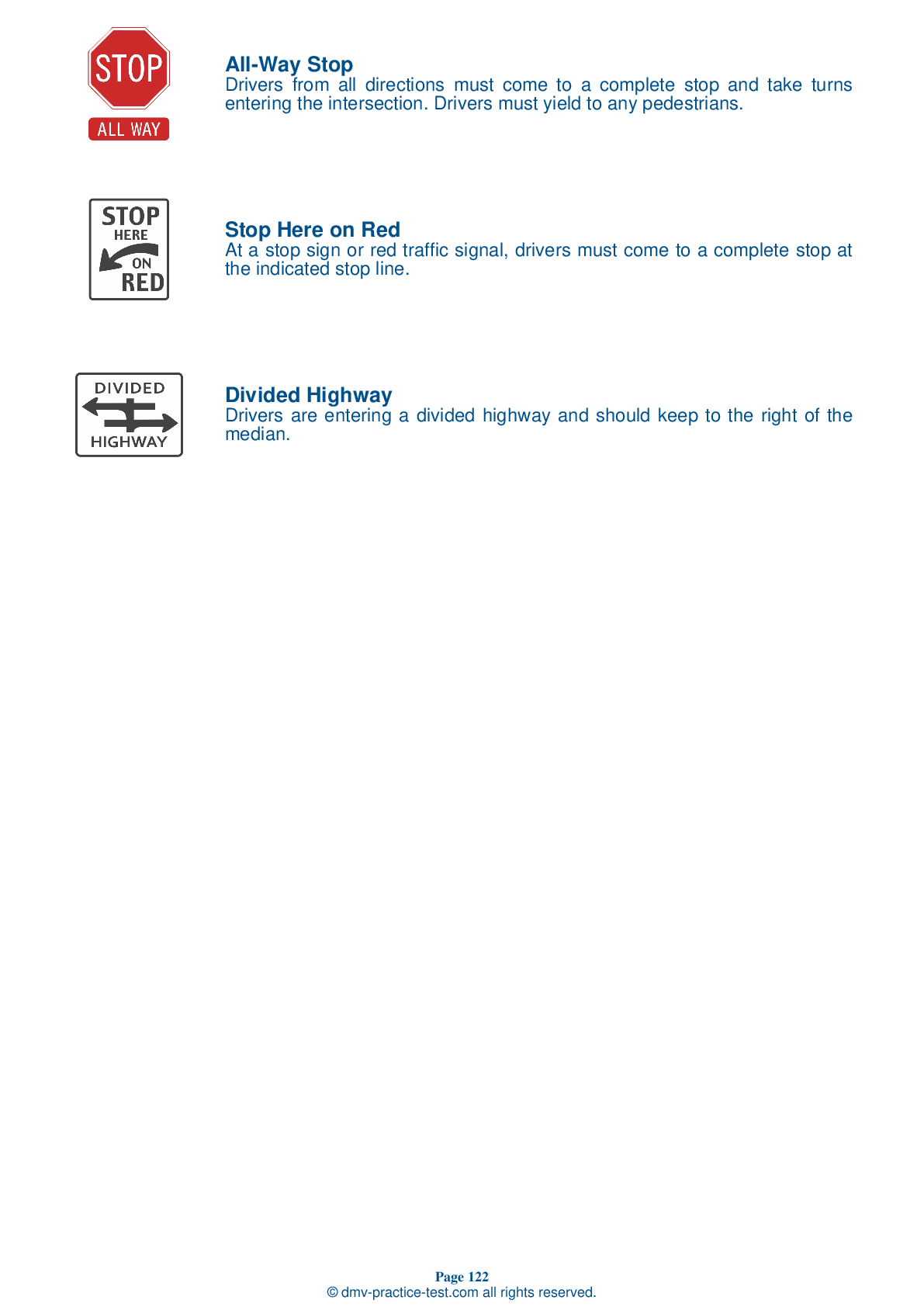Class B Driving Test | New Mexico 2025 #2 Page 3 of 7
Train for FREE online with our New Mexico class B license test. The official exam test consists of several obligatory parts, with all of them checking your knowledge of different blocks of road rules. If you need to obtain a NM CDL class B permit in 2025, practice as much as possible. Free sample tests published on our website will help you check and improve your knowledge and boost your grades. Please bear in mind that CDL class B requirements may vary from state to state.
15 . An alcohol evaporator is especially important:
Some air brake systems contain an alcohol evaporator. This evaporator introduces alcohol into the system to help prevent ice from forming in cold weather.
16 . When driving in winter, which of the following should receive extra attention in a pre-trip inspection?
When doing a pre-trip inspection during the winter, you should pay extra attention to the coolant level and amount of antifreeze; the defrosting and heating equipment; the wiper blades and windshield washer; the tires and tire chains; the lights and reflectors; the windows and mirrors; the hand holds, steps, and deck plates; the radiator shuttles and winterfront; and exhaust system.
17 . When loading a trailer, you should:
A load of cargo must be properly balanced. Placing too much weight over an axle can damage the axle and make it more difficult for you to steer. Placing too little weight over an axle can cause poor traction, also leading to difficult handling.
18 . While operating on a downgrade, you should brake until you reach a speed that is:
While driving downhill, you should hold down the brake pedal until your vehicle reaches a speed 5 mph below your safe speed, then release the brake pedal. Repeat this process.
19 . Air tank drains:
Compressed air in an air brake system usually has a certain amount of water and oil in it. This can harm the system if allowed to accumulate. Air tanks have drain valves to aid in removing water and oil from the compressed air.
20 . On slippery roads, you should:
On a slippery road, you must adjust your driving speed to fit conditions. Because it will take longer for your vehicle to stop on a slippery road than on a dry road, you should increase your following distance when conditions are slippery. Avoid driving in a way that requires you to change speeds frequently.
21 . When pulled over to the side of the road, you should:
When stopped on the side of the road, be sure to turn on your vehicle's four-way emergency flashers, especially during times of lowered visibility. Place warning devices within 10 minutes of being stopped.
See the exact questions that will be on the 2025 New Mexico DMV exam.
99.2% of people who use the cheat sheet pass the FIRST TIME
Lillian MCcranie explains how our CDL study guide was helpful in passing the exam and recommends it to everyone.
Cameron tells us how he purchased the CDL exam, and found it to be a useful tool which helped him pass the exam and find a job.



